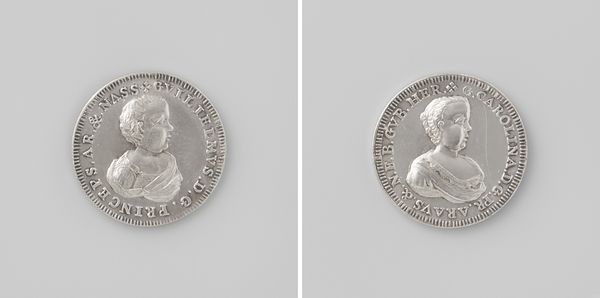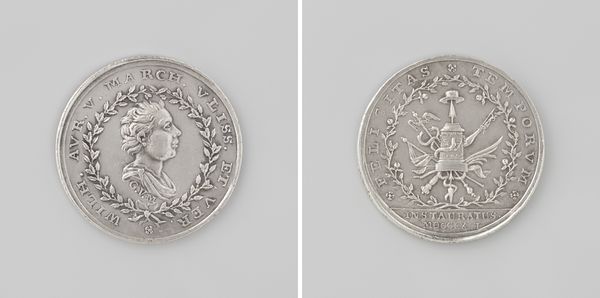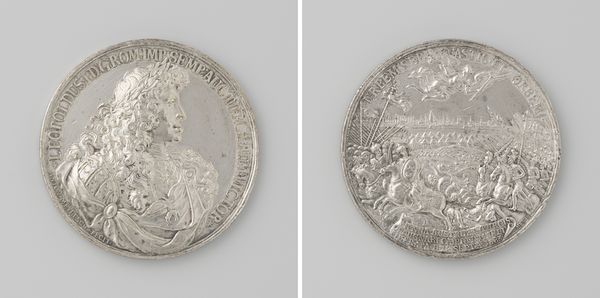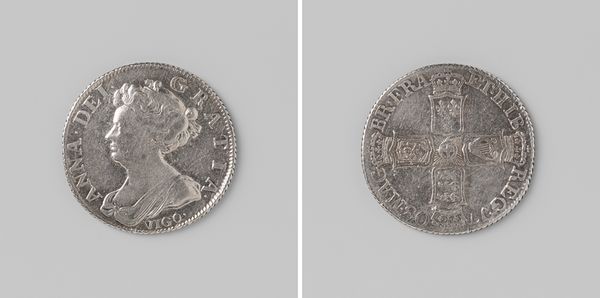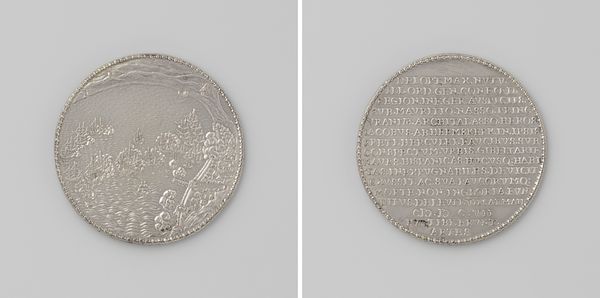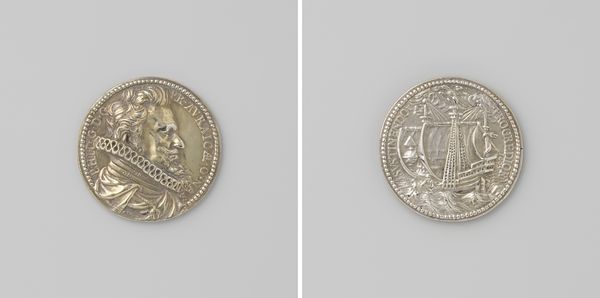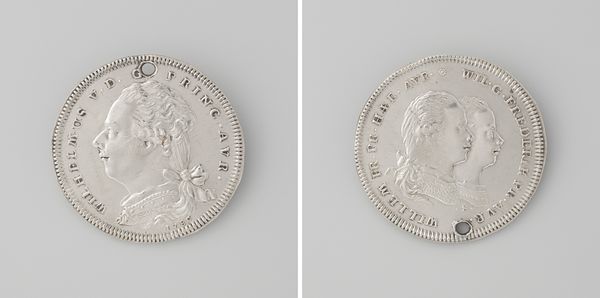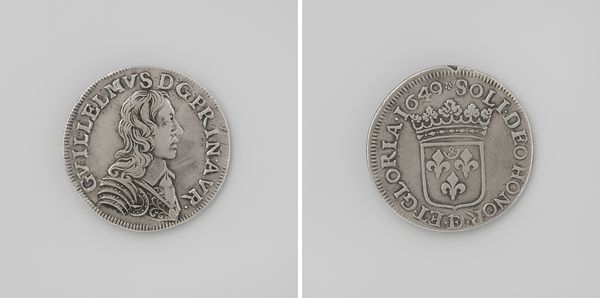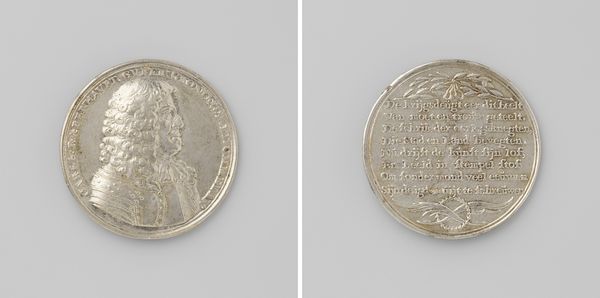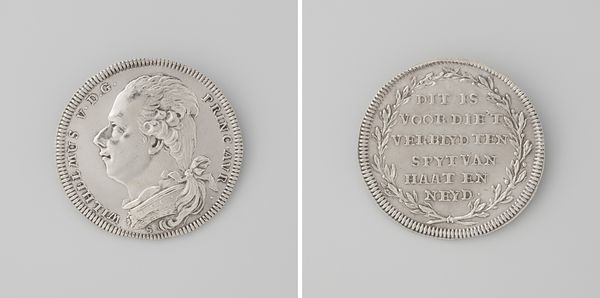
metal, engraving
#
portrait
#
baroque
#
metal
#
engraving
Dimensions: diameter 4 cm, weight 297 gr
Copyright: Rijks Museum: Open Domain
Editor: This metal engraving from 1707 by Christian Wermuth is a medal dedicated to Johann Willem, Duke of Saxe-Gotha, who died in battle. There's a stark formality to the portrait on one side, juxtaposed with the rather cramped inscription on the other. What can you tell me about its historical context? Curator: Well, beyond its aesthetic value, we need to recognize this as a potent form of political communication. Consider how Wermuth, the artist, situates the Duke within the larger landscape of early 18th-century power. The Duke’s participation in the War of the Spanish Succession highlights the ongoing struggles and alliances of the European monarchies, influencing gender roles as much as class distinctions. The very act of creating this commemorative medal is about crafting a specific narrative. What do you make of this narrative, given what we know of the political context and gender norms? Editor: I see it trying to immortalize him as a noble figure, focusing on his role in a war, maybe overshadowing some less flattering realities, but how might class be represented here? Is it merely assumed due to the subject’s position? Curator: Exactly! Think about it: the material itself—metal engraving—is significant. Medals were exclusive items, tokens circulated amongst elites to solidify alliances and commemorate shared interests. Who did the Duke represent? To whom does this “immortalization” appeal and who is left outside its orbit? What might this say about how these elite circles sustained power? Editor: So, it’s less about historical accuracy and more about shaping a legacy for a specific audience and to re-inforce societal hierarchies. I didn't consider that perspective before. Thanks! Curator: It's a great starting point. I think digging deeper into these questions illuminates the way art intersects with history, gender, race, and structures of power. The object as propaganda tool.
Comments
No comments
Be the first to comment and join the conversation on the ultimate creative platform.
